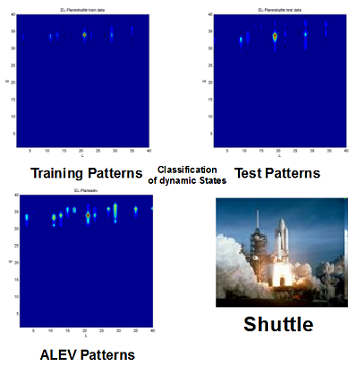There are estimations that there are more than 600 different mathematical-statistical methods
for modeling, dealing with risk and indetermination.
[Proske, 2006]
Data-based modeling is characterized through consideration of expert knowledge, observation data and
measurements for mapping nonlinear system behaviour.
Opposite to analytical approaches data-based models "learn" complex system dynamics.
The bio-inspired paradigm of Neural Networks (NN) is based on Neuro-Biology, Neuro-Informatics,
System Theory and . A low memory demand and short recall times are hereby the
essential advantages for near realtime applications using high dimensional data.
Contrary to classic expert systems a NN is an associative memory, so that large data bases are not needed
to be linked and queried in recall phase.
With the use of special approaches for data reduction it is possible to shrink down very large data sets
before model calibration is started. By this memory consumption and calculation times are reduced significantly.
In case that available raw data is few the density of patterns can be increased by simulation runs. The real and virtual
data is then the basis for model training.
The images below show ALEV-visualizations for some data from the UCI Machine Learning Repository.


General areas of application in socio-technical and
socio-economic systems ("soft systems"):
 Clustering,
Clustering, Classification - "Pattern Recognition",
Classification - "Pattern Recognition", Prediction, and
Prediction, and Decision Support.
Decision Support.
Some areas of application in engineering ("hard systems"):
 Noise Filter,
Noise Filter, Replacement of missing values,
Replacement of missing values, Technical Processes (e.g. roller mills, grinding, milling and welding),
Technical Processes (e.g. roller mills, grinding, milling and welding), Production Lines,
Production Lines, Material Flows and Supply-Chains,
Material Flows and Supply-Chains, Handling Technology, and
Handling Technology, and Robotics.
Robotics.
The TopLab guides und supports you with:
 System descriptions,
System descriptions, Data collection and -coding,
Data collection and -coding, Modeling,
Modeling, Benchmarking,
Benchmarking, Analysis and Reporting,
Analysis and Reporting, Documentation and Validation.
Documentation and Validation.

